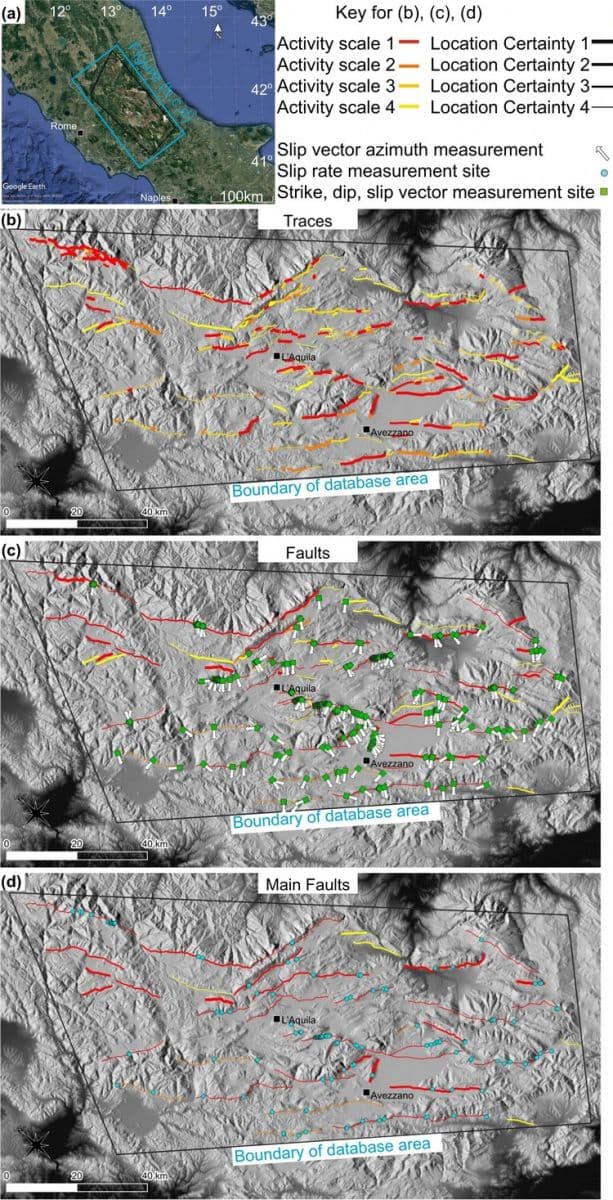
Data Descriptor |Open Access | Published: 22 March 2021
Faure Walker, J., Boncio, P., Pace, B. et al.
Fault2SHA Central Apennines database and structuring active fault data for seismic hazard assessment.
Sci Data 8, 87 (2021). https://doi.org/10.1038/s41597-021-00868-0
Abstract
We present a database of field data for active faults in the central Apennines, Italy, including trace, fault and main fault locations with activity and location certainties, and slip-rate, slip-vector and surface geometry data. As advances occur in our capability to create more detailed fault-based hazard models, depending on the availability of primary data and observations, it is desirable that such data can be organized in a way that is easily understood and incorporated into present and future models. The database structure presented herein aims to assist this process. We recommend stating what observations have led to different location and activity certainty and presenting slip-rate data with point location coordinates of where the data were collected with the time periods over which they were calculated. Such data reporting allows more complete uncertainty analyses in hazard and risk modelling. The data and maps are available as kmz, kml, and geopackage files with the data presented in spreadsheet files and the map coordinates as txt files. The files are available at: Faure Walker, JP et al. (2020): Fault2SHA Central Apennines Database.
Rights and permissions
This article is licensed under a Creative Commons Attribution 4.0 International License, which permits use, sharing, adaptation, distribution and reproduction in any medium or format, as long as you give appropriate credit to the original author(s) and the source, provide a link to the Creative Commons license, and indicate if changes were made. The images or other third party material in this article are included in the article’s Creative Commons license, unless indicated otherwise in a credit line to the material. If material is not included in the article’s Creative Commons license and your intended use is not permitted by statutory regulation or exceeds the permitted use, you will need to obtain permission directly from the copyright holder. To view a copy of this license, visit http://creativecommons.org/licenses/by/4.0/.